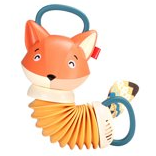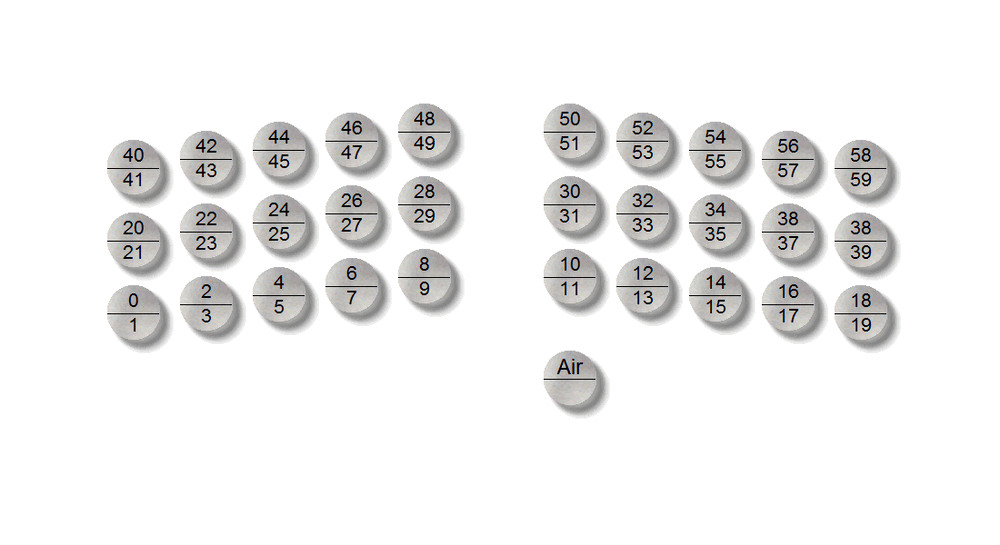
Notemaker
Members-
Posts
112 -
Joined
-
Last visited
Profile Information
-
Gender
Male
-
Interests
Anglo Concertina / s
-
Location
San Antonio TX USA
Recent Profile Visitors
1,915 profile views
Notemaker's Achievements

Chatty concertinist (4/6)
-
75 More Irish Session Tunes for Anglo Concertina - out now
Notemaker replied to gcoover's topic in Teaching and Learning
Have the first book. Excellent! Will get this too. Gary, have you seen 'Walton's ; 110 Irish Concertina Tunes Vol 1 by Aogan Lynch' ? It is for Anglo, BTW, but lacks a Tab. How about working those into your series on Irish Anglo Tunes? -
Interesting that nobody mentioned Gary Coover's Irish tune book/s. My lifelong experience growing up in an Irish immigrant community , and from childhood learning that music on a couple of things, is that mostly we learn by ear, with little or no instruction. In those days, long long ago, if you had a problem with a tune, then you could get it written out in 'do reh me' format. After getting a tune off you could embellish it if you needed to, but that was not necessary to 'get the tune'. Due to the popularity of this music today, many performers rely on 'fancy' versions of tunes, indeed many of their selection bared down to no fiddley bits turn out to be not such great material for the ear learner, eg Caitleen's 'The Rookery' V the eminently easily learned old favorite 'The Banshee'. I would imagine on any instrument this holds up, to wit, the more decorations necessary, the less interesting the tune. Because Caitleen falls into that category of artists, I passed on her, IOW she is no Joe Cooley, or Michael Coleman. Yes she does put the music under the feet of the dancer, but that's about all. Cooley, OTOH, so well ploughs the seed of a tune into our brains that we can barely get it out of our system. And so, as musicians, we end up playing them. 'The Wise Maid', 'Up Stairs In A Tent', 'The Blackthorn' etc. The same applies to Michael Coleman's recordings. I would far rather be a Cooley type free reed player than a Caitleen one. Instead of the on-line, and to me, expensive path, I chose the ABC and TAB book path, by getting the Kindle version of Gary Coover's book, and using ABC tune sites. I paid less than the price of a hamburger meal for the Kindle version of this book. In it I found several great settings of tunes, which later, I can if I choose, embellish in any way I like. And I can take forever to read it all, as opposed to those on-line deals that limit the time you can access them, IOW con you into paying by the month. In short learning tunes with embellishments is a waste of my time! as it is the basic tunes I want to get. PS my instrument biography includes Violin, Irish Uilleann Pipes, Tin Whistle, Melodian, Banjoes both kind, Greek Bouzouki, Harmonica both kinds, and the Irish Flute. I mess with trying to play other things as well. Not going to get into Morris music which I am also interested in. So my 10 cents is, get a book and spend the money you save from those monthly renta a lesson deals, on a nice classic Anglo Concertina.
-
Notice several gliding over Caitleen Mc Gowan ( Sorry the Gaelic spelling is as memorable to me as the road to timbucktoo ...lol ).. with scant consideration of pitfalls / errors. First of all, I began with folk dance when a small boy. Then we had simple instruments such as Tinwhistle and Harmonica. But the way we learned by ear still applies. Get the basic tune FIRST then add to that later. With Caitleen's approach it feels as if she has it the other way around, stuffing pieces with diddly decorations from the get go. That, IMHO, is a waste of time. Far better to learn, taking as much time as you like, from Garry Coover's books, or similar, getting basic cross row technique first, then migrate, if you like to other sources. Too don't be swamped in 'Celtic' music by only learning from that source. Beyond there is a world of great music for Anglo. Age and learning. In this case it does not matter.
-
Fascinating! Well on my 30 BTN Jeffries type Anglo, ignoring rows for now, there is only one 'hands' position option, left or right. That is top-most, or bottom-most because there are 5 buttons in each row, and I have but 4 fingers, the thumb being too inconvenient to use. My system makes use of the properties of numbers to get rid of all that clutter, "RHS, LHS, P ( push ), D ( draw )" and so on. I use but two numbers for each button, because there are 2 notes under it. I chose to start counting from zero, 0, because it is an even number. Happily for me with just 15 buttons per side; of the numbers for any button, the first tells me which side - even numbers LHS, odd RHS - and which row to be on, 0=G,2=C,4=Accidentals ( are LHS ); while 1,3,5 same row names ( are RHS ); and the second ( number ) tells me bellows direction - even number indicate press, odd indicates draw. While of the options left, one of 0,2,4,6,8; if press, or 1,3,5,7,9 if draw, indicates the button So for example '08' is LHS press bellows on the top-most button of the 'G' row, sounding the note D. After a while using this system I can nearly translate to it from Garry Cover's tabs as I read a tab of a tune.
-
Because my box has 3 rows of 5 buttons both ends; I use all 4 fingers on each. On each row, home position is the upper most buttons, and the only other one is lower position on the lower most buttons. I define these 5 buttons as a 'decade' of notes. Cross rowing is strictly observed, meaning the top most finger ALWAYS in each row press the top most button, or if shifted down the 2nd most top button. Ditto for the rest of the fingers. I developed a numbered button layout with some help here CN to navigate TABs that I just cannot get along with. Currently working on transcribing some tunes from those to it. Pic below.
-
Michael Burke is a music store in Dublin, think its called 'O'Nellies' or something similar. If I recall correctly, it sells cheap Chinese knockoffs, including black-wood Irish flutes - probably made in Asia and colored with black boot polish. Terrible junk IOW. Even-though I may have appeared bottish, I most certainly am no such a thing! And to be honest, I am slightly offended at the imposition. Nevertheless I do confess to being a bit of math nerd having created a couple of original hypotheses in it. Any-case, reviving this thread, if you check the date stamp/s, is the work of ' Michael Burke / O'Nellies' not my doing!
-
Thanks for the update. I have not looked at how I 'could' associate two digit numbers to ABC letters in a tune, but suspect that once gotten one of them, the rest should follow the same path. After all, the stave does indicate the key, time values, etc. So really all I need to get on the bottom of it is a number below each note, instead of a letter. Assuming the Do Rhay Me model. Anyway, since it is for my own use it is not otherwise a bother. Thanks again.
-
Thank you for the comment. Yes! Personal at this time. I had defined the first group as follows; must have two digits in 5 pairs, to begin with Zero, one: so 0,1, 2,3 ... and so on. It suits me better because not only do the values indicate the bellows direction, but also to which side, LHS or RHS, and to which row, and button they refer. So if first digit is even, then it is on the LHS. If odd the opposite. Decade indicates which row, 0, 2, 4 (LHS IR, MR, OR), or 1, 3, 5. ( RHS IR, MR, OR); last digit indicates which button is required, always a number '0...9'. So in the first decade/row, which by definition is even, since Zero is defined as even; all the numbers are LHS inside row. Now the LHS middle row happily falls in the second decade, since 2 is even; thus for example bottom button middle row is 20,21 and so on. Likewise it will be found that the LHS accidental row is also an 'even' case, since 4 is even; thus the bottom button there is 40,41. On the RHS the decades/rows are odd, 1, IR; 3 MR; and 5 OR; So any random number between 0 and 59, we can predict which direction the bellows is to be moved, AND which side, LHS or RHS the button can be found, as well as the row and the precise button number. For example, '45', this is on the LHS outside/accidentals row of a C/G box, a draw bellows on the middle button of a 5 button row, in my case, Jeffries layout, it is D#. In Gary's tab it is 3A. A cheat sheet for the LHS / RHS row location index, where 'x' is any number ' 0 ... 9'. O, x = LHS IR; 2, x = LHS MR; 4, x = LHS OR; 1, x = RHS IR; 3, x = RHS MR; 5, x = RHS OR; Numbers that occur where 'x' lies indicate bellow direction, even = press, odd = draw. I could not think of a simpler system for my own use, and may give some time to investigating a computer program to subscript my tune staves made from ABC with it. Thanks to Michael, above, and lachenal74693, illustration, and for the wonderful thread.
-
Envious of the Theakston's swilling, another life to me long ago. Well sort of yes ! But the 'inside row' is the 'G' row on a C/G box. Please forgive my non technical reading of this wonderful diagram, it appears that button 0,1 is illustrated as the bottom button LHS of the accidental row, or have I misread your diagram? If I did read it right, then swapping that, i.e top most row in your diagram, (on this page ), with the current bottom most row, ( on this page ), on both LHS and RHS would deliver what I originally imagined as a desirable layout. For those who wonder why I would want such a thing, consider this. All even numbers are 'press' bellows, and all odd numbers are draw. Then as the value increases so does the pitch, which to a nerdy math brain such as I, is a lovely thing! As to why nobody else has ever made such a plan, I have to say 'perhaps many have'.


